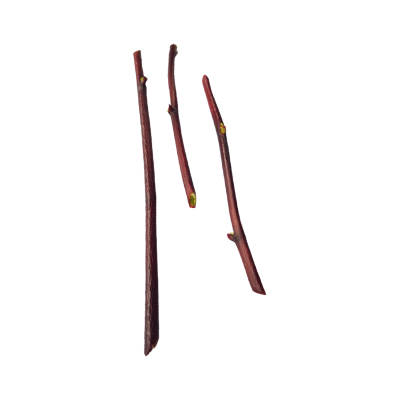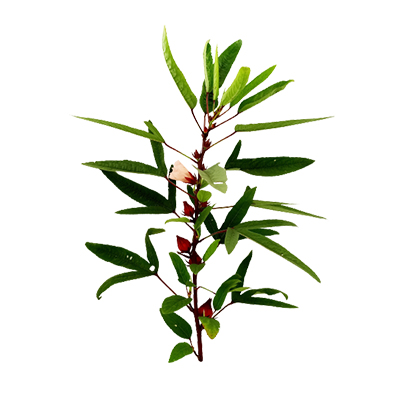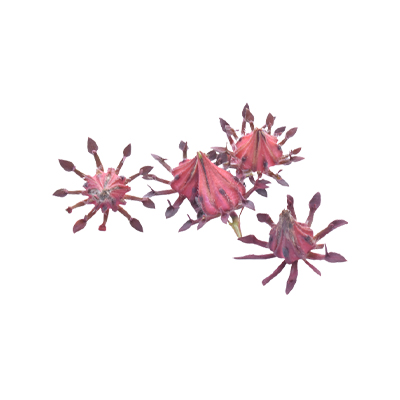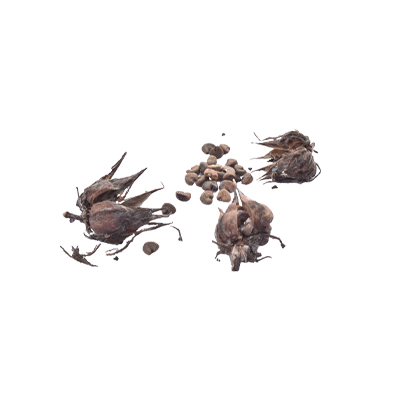Roselle
Hibiscus sabdariffa L.
Malvaceae
Location in our garden
Orchard
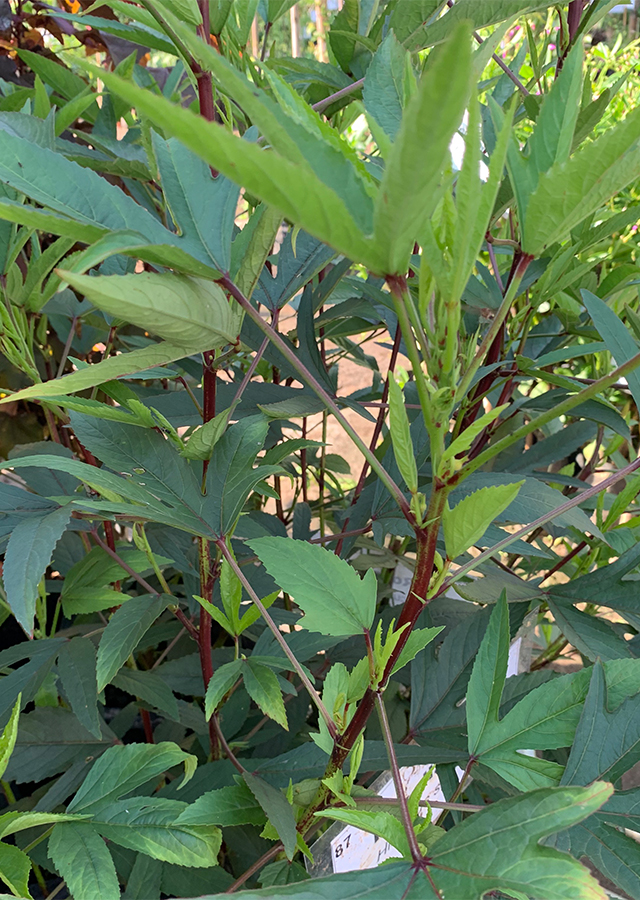
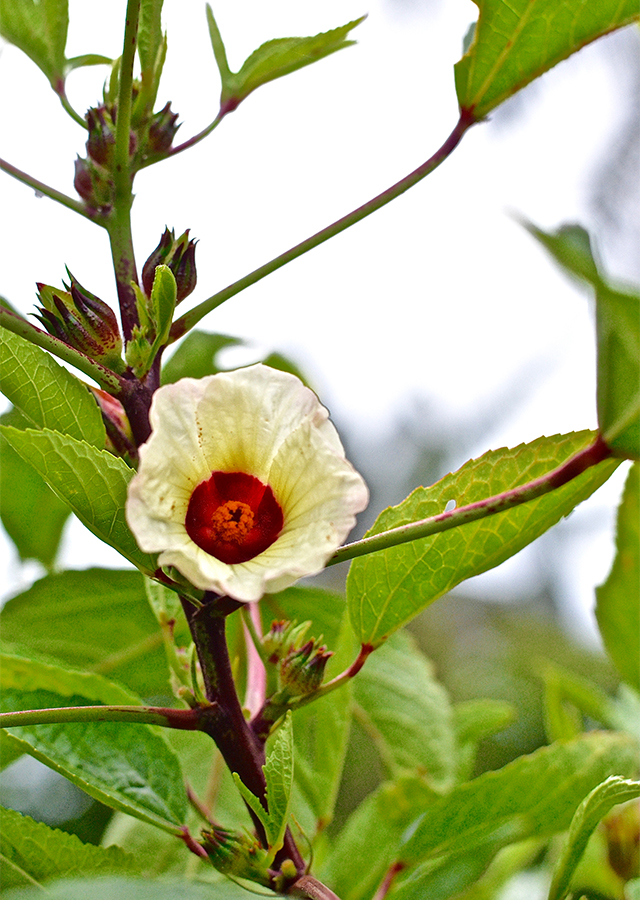
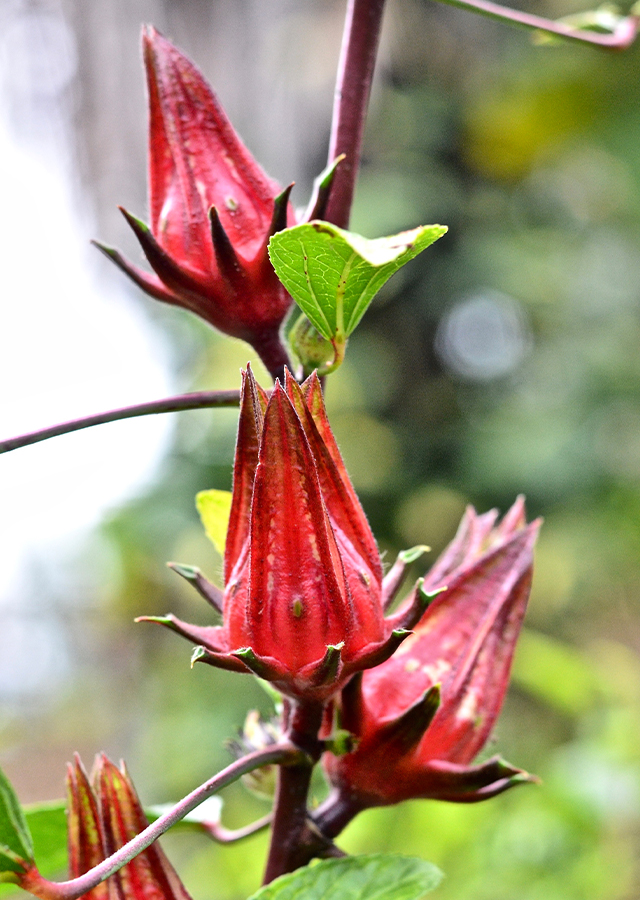
Synonym
Abelmoschus cruentus (Bertol.) Walp.
Furcaria sabdariffa Ulbr.
Hibiscus acetosus Noronha
Habitus
Shrubs. An erect, herbaceous annual with tough stems and limited branching to 1 m high
Part Used
Leaves
Seeds
Fruit
Stem
Growing Requirements
Full Sunshine
Drought Resistant
Habitat
Forest
Grassland
Overview
Roselle is probably of tropical African origin and was domesticated in ancient times first for its edible seeds and subsequently for its leaves, young shoots and flower parts as well. Nowadays roselle is widely distributed in the tropics and subtropics, usually in cultivation as a fibre plant or vegetable, sometimes as an escape. It was in Asia that types suitable for the production of fibres were selected
Vernacular Names
Rosela (Indonesia), Canamo de Guinea (Spanish), Ketmie rose (French), Carcade (Italian), Shan jia zi (Chinese), Krachiap (Thai), Roozera (Japanese), Zobo (Nigeria).
Agroecology
Roselle is sensitive to frost, which is the main constraint to its cultivation in temperate zones. Roselle is a short-day plant, requiring a photoperiod of 12-12.5 hours for flowering and fruiting. Roselle can be grown on many soil types, provided these are deep, light textured and have good drainage. For economic yields, soils should be well-supplied with organic material and essential nutrients. It is reasonably drought resistant. It tolerates both highly acid and moderately alkaline soils, but is intolerant of waterlogging. It requires a sunny position and 1,500-2,000 mm of rainfall.
Morphology
- Stem - often woody at the base.
- Leaves - simple, the lower leaves often undivided, ovate; the upper leaves palmately 3-5-parted with lanceolate segments, alternate, polymorphic, 8—15 cm x 6—14 cm, with a nectary on the midrib beneath.
- Flowers - solitary, axillary and showy, yellow or pink with a dark purple basal spot; epicalyx segments 7—10, without an appendage, reddish, linear and usually fleshy.
- Fruits - ovoid, obtuse capsule, 13-22 mm × 11-20 mm, deeply embedded within calyx, dehiscing by 5 valves when ripe with 30-40 seeds per fruit. Roselle fruits are dehiscent as the fruit wall bursts at maturity and the seeds are scattered.
- Seeds - subreniform, 3-5 mm × 2-4 mm, reddish-brown with many small yellowish-brown warty spots, pilose, hilum reddish-brown.
Cultivation
- Propagated by seed. Seeds can be planted directly into the garden or into seed trays, about 1/2 cm deep.
- Propagated by stem cuttings. Allow about 120 cm between plants.
Chemical Constituents
Flavonoids, phenolic, saponins, alkaloid, tanin, linoleic acid, 5 hydroxymethylfurfural, malic acid, α-tocopherolsl, anthocyanins, ascorbic acid.
Traditional Medicinal Uses
- Leaves are considered emollient, stomachic, scorbutic and febrifuge.
- Seeds are diuretic and tonic.
- Flowers are considered tonic and aperitive.
- Studies have suggested antihypertensive, cardioprotective, hepatoprotective, antioxidative, antimicrobial, hypolipidemic, uricosuric, antiviral, antiobesity, antimutagenic, antiatherosclerotic, antiviral, anticancer, neuroprotective, nephroprotective, antidiabetic, antianxiety, antidepressant properties.
- In Sudan, roselle has been used for relief of sore throat and healing wounds.
- In India, leaves are poultice on abscesses.
- In African folk medicine, the leaves are used for as a soothing cough remedy.
- The leaves are used externally as a poultice on abscesses, sores and ulcers. The juice is used as a treatment for conjunctivitis.
- The leaves and flowers are used internally as a tonic tea for digestive and kidney functions.
Part Used
Reference Sources
Ali, B. H., Al Wabel, N., & Blunden, G. (2005). Phytochemical, pharmacological and toxicological aspects of Hibiscus sabdariffa L.: a review. Phytotherapy research : PTR, 19(5), 369–375. https://doi.org/10.1002/ptr.1628
de Padua, L.S., Bunyapraphatsara, N. and Lemmens, R.H.M.J. (Editors), 1999. Plant Resources of South-East Asia No 12(1). Medicinal and poisonous plants 1. Backhuys Publishers, Leiden, the Netherlands. 711 pp.
Mahadevan, N. & Shivali, & Kamboj, P.. (2009). Hibiscus sabdariffa Linn.–An overview. Natural Product Radiance. 8. 77-83.
